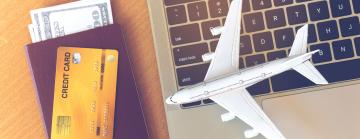Frequently Asked Questions
Do you have a Travel question?
To quickly find what you’re looking for, use the search bar or drop-down button below to filter FAQs by keyword or category.
Yes, however, the travel expenses of a spouse, family member, or other person accompanying the approved business traveler, are unallowable. Additionally, if there are personal days included in the trip, you will be required to attach an airfare comparison to your Concur expense request indicating the cost of business-only travel. You may refer to our Documenting Airfare Comparisons Quick Start Guide.
No, these are considered personal expenses and are unallowable.
SLAC pays a standard rate per mile to the owner/operator of a personal vehicle for business travel based on the actual driving distance by the most direct route. When one or more individuals are traveling together in the same personal vehicle, SLAC only reimburses the owner or operator of the vehicle.
The standard mileage rate includes the cost of all actual automobile expenses, such as fuel and lubrication, towing charges, physical damage to the vehicle, repairs, replacements, tires, depreciation, insurance, etc.
In addition to the standard mileage rate, necessary and reasonable charges for the following automobile-related expenses are allowed: tolls, ferries, parking, bridges, tunnels, and liability and physical damage insurance coverage for driving in foreign countries or Hawaii. Traffic ticket and parking ticket expenses are personal and will not be paid by SLAC.
SLAC pays mileage allowance, meals, lodging, and automobile-related expenses if travel by vehicle is the most economical mode of transportation available. Otherwise, the least expensive mode of transportation will be allowed based on an airfare comparison.
- The traveler should base their mileage request on an average driving distance of 400 miles a day by the most direct route, or the actual number of days taken, whichever is less.
- For two or more travelers, transportation expenses must be allocated to one traveler’s expense report.
The most direct route is defined as not more than 105% of the most direct mileage indicated by Google Maps. Expense for ground transportation is calculated depending on if the trip originates inside or outside of normal business hours (usually defined as weekdays, 8:00 a.m. to 5:00 p.m.).
- When the trip occurs during weekends, holidays, or outside of normal business hours, the traveler should calculate the distance using their home address.
- When the trip occurs during business hours, calculate the distance from the traveler’s SLAC worksite. If the trip did not include a business stop at their SLAC worksite, the traveler should use their home address as the starting point when that distance is less.
Weekends, holidays, and other necessary standby days may be counted as business days only if they fall between business travel days.
If non-business days are at the beginning or end of a traveler’s business activity, and the traveler arrives early or remains at the business destination for non-business reasons more than 24 hours before or after the business activity, those days will be counted as personal days.
No. There is a list of approved Administrative Assistants that are authorized to make reservations for invited visitors. Contact travel@slac.stanford.edu for direct billing information.
No, non-employees cannot claim meals per diem. Expenses for non-employees will be paid based on actual costs (not to exceed the per diem rate) and must be supported by itemized receipts regardless of the amount.
In order to be reimbursed, one of the following supporting documents are required to be submitted in the Concur expense report:
- All actual receipts
- Comments documented in Concur that itemize out each day's meals cost, using the actual costs regardless of whether or not they exceed per-diem
- An email from the traveler that states the dollar amount they actually spent on meals (if they do not have meal receipts)
Visitors are required to stay at the Stanford Guest House unless it is sold out or the visitor has a valid reason for why the Guest House doesn’t meet the traveler’s needs. If a traveler does not stay at the Stanford Guest House, the lodging may not exceed the per diem rate.
Contact Us for More Information
Please view our Travel and Expense Policy for details about reimbursable and non-reimbursable expenses. For all travel expenses that are not reimbursable, you must not incur/reconcile a Travel Card (TCard) expense or seek reimbursement.


